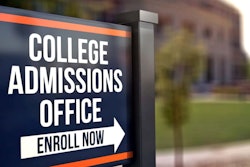Minority Enrollment Low at Pennsylvania Universities, Report Says
HARRISBURG, Pa.
The student population of Pennsylvania’s 14 state-owned universities is overwhelmingly White, and minority enrollment has stayed essentially flat over a five-year period, according to statistics presented to the system’s governing board last month.
The five-year diversity report said that the number of minority students enrolled in the State System of Higher Education has hovered at or slightly above 8 percent between 1997 and 2001, compared to 16 percent to 17 percent combined enrollment at Pennsylvania’s four state-related universities during the same period.
In fall 2002, White students accounted for about 88 percent of the system’s more than 101,000 students, while 6 percent were Black and slightly more than 1 percent were Hispanic, the report said.
Daniel Elby, a member of the system’s board of governors who had requested the report, said he was troubled by the numbers. He said he asked for a systemwide accounting of minority enrollment and graduation rates after hearing from university presidents that both numbers were low.
“This is good information to see where we are, but on the bad side we have not come very far,” says Elby, who is Black and a graduate of a state system school, Lock Haven University. “I don’t think we’re really making this a top priority, and as a person of color, this bothers me.”
Charmaine Clowney, the system’s director of diversity and equal opportunity, said the minority enrollment disparity between the state system and the state-related universities — Penn State, Lincoln, Temple and the University of Pittsburgh — is due in part to geography.
“Most of the state system schools are in rural areas, and this is really challenging for capturing minority students, whereas the state-related schools, like Temple and the University of Pittsburgh, are closer to urban areas,” she says.
Four- and six-year graduation rates for Blacks and Hispanics also lagged behind systemwide averages, according to the report. Roughly 12 percent of Black students who entered the system as freshmen in 1996 graduated by 2000, and 16.9 percent of the Hispanic students in the same class graduated in four years, compared to 25 percent of all state system students.
Six-year graduation rates for the 1996 freshmen were about 37 percent for Blacks, 40 percent for Hispanics, and 52 percent for all state system students, according to the report.
© Copyright 2005 by DiverseEducation.com





















